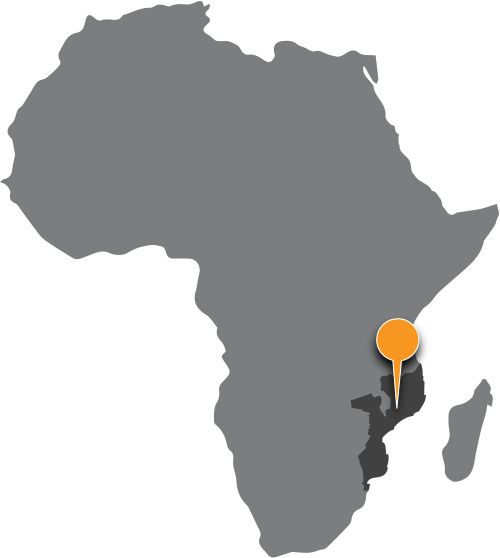Nearly one acre of forest is lost every second
27M+ ACRES SAVED
Thanks to generous support from our donors, we have successfully reached our fundraising goal for this project.
Safeguard the Highest Peaks of Mount Namuli
Mount Namuli is the second highest peak in Mozambique and part of the “sky island” mountain chain in Zambezia Province. This 7,936-foot natural wonder presents a dramatic landscape, covered by a mosaic of high-elevation forests, grasslands, and agricultural land. It’s slopes are known for incredibly diverse species and high rates of endemism. Namuli also provides critical ecosystem services to local communities that reside on the mountain.
Because this is a global priority for conservation, Rainforest Trust and our local partner, Nitidae, are working to establish a Community Conservation Area in the Mount Namuli uplands. This project will protect all areas above 3,937 and secure the resources local communities rely on.
The new protected area will also safeguard the habitat of many threatened species, including the endemic Vincent’s Bush Squirrel and Mount Namuli Pygmy Chameleon, which is found only in high-altitude forest patches. The Spotted Ground-thrush, Plectranthus guruensis and Vulnerable Thyolo Alethe can also be found here. Header Photo: The Endangered Pygmy Chameleon, by Katie Pugh/Rainforest Trust.
COUNTRY
Mozambique
ACRES
13,840
COST PER ACRE
$30.41
SPECIES
Mount Namuli Pygmy Chameleon (EN), Vincent’s Bush Squirrel (EN), Spotted Ground-thrush (EN), Plectranthus Guruensis (EN), Thyolo Alethe (VU)
(CR)=Critically Endangered, (EN)=Endangered, (VU)=Vulnerable
ACRES CONSERVED BY
Designation
PARTNER
Nitidae
CARBON STORAGE
1,703,377 mT*
*(metric tonnes of CO2 equivalents)
Stop Slash-and-Burn Agriculture
Mount Namuli currently faces mounting threats of habitat degradation and forest fragmentation. Forests are often converted into farmland for crops, which exhausts the soil. Slash-and-burn agriculture causes fires during the dry season and prevents the land from regrowing.
Once the protected area is established, it will play a substantial role in halting deforestation and ensure that the remaining biodiversity is preserved. Our partner will also work alongside local communities to develop and implement long-term plans for conservation and natural resource management.
Be a Part of Our Solution
Your donation will help Rainforest Trust and our local partner protect 13,840 acres of critical mountain habitat to be maintained with local communities for future generations. With your support, revenue generation through honey production and partnerships with businesses will play a key role in providing sustainable economic growth within the communities.
Deforestation will be also monitored through field team observations and community patrols. Patrols will actively monitor and manage natural resource use within the protected area, and encourage community leaders and government to communicate and collaborate to keep these valuable ecosystems healthy for years to come. Photos: (Above) Mount Namuli, photo courtesy of Nitidae; (Below) The Endangered Spotted Ground-thrush, by Eric Gropp.
Project Location

Learn More About This and Other Related Projects:
Thanks to the generous support of our Board members and other supporters who cover all of our operating expenses, Rainforest Trust is able to allocate 100% of donations to conservation action. No board member receives financial benefit and our staff salaries are modest.
Rainforest Trust is a registered 501(c)(3) nonprofit organization.
Quicklinks
Headquarters
To Visit Us:
7200 Lineweaver Road
Suite 100
Vint Hill, VA 20187
For Mailings:
P.O. Box 841
Warrenton, VA 20188
To Call Us:
(800) 456-4930
EIN: 13-3500609
CFC #11257




